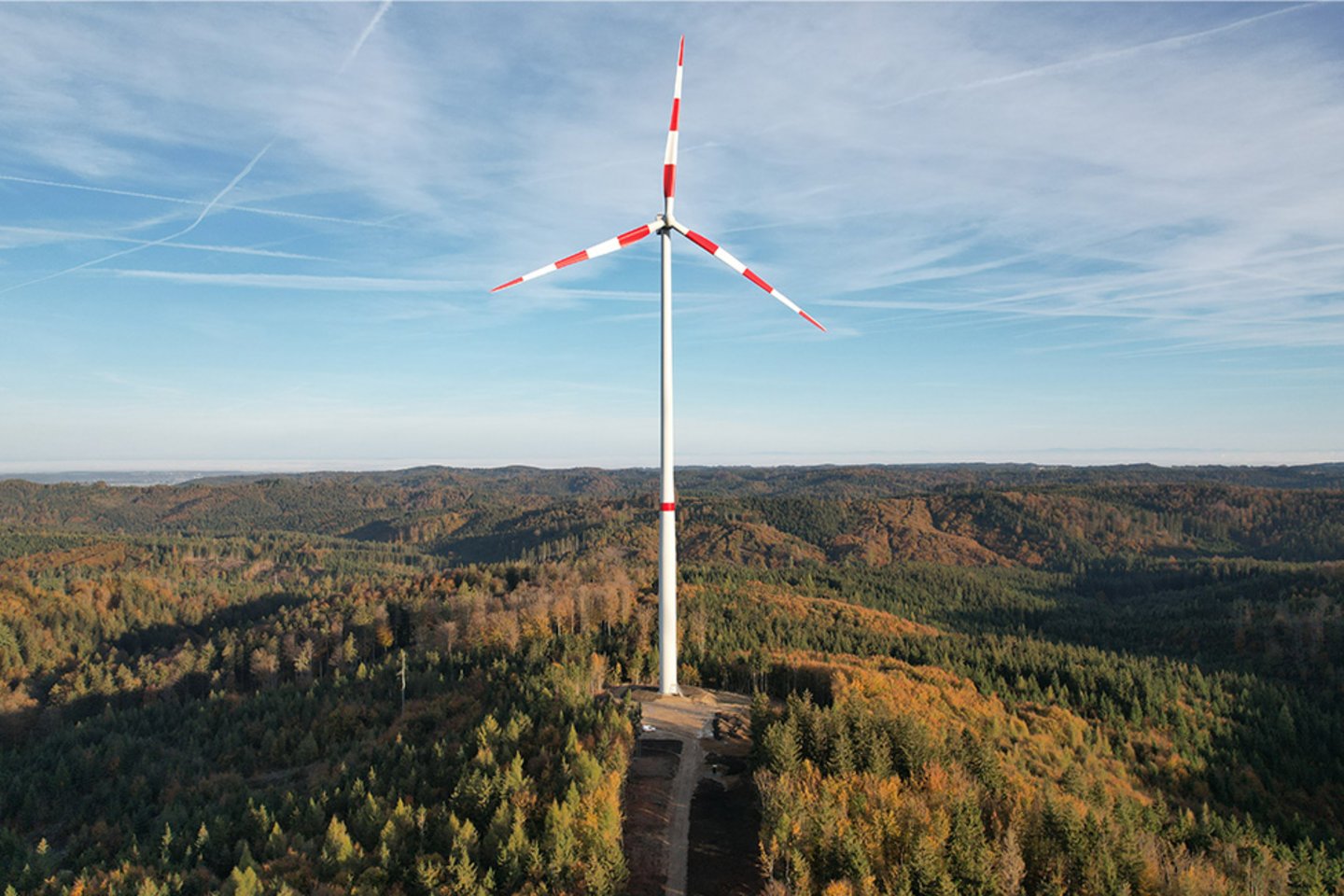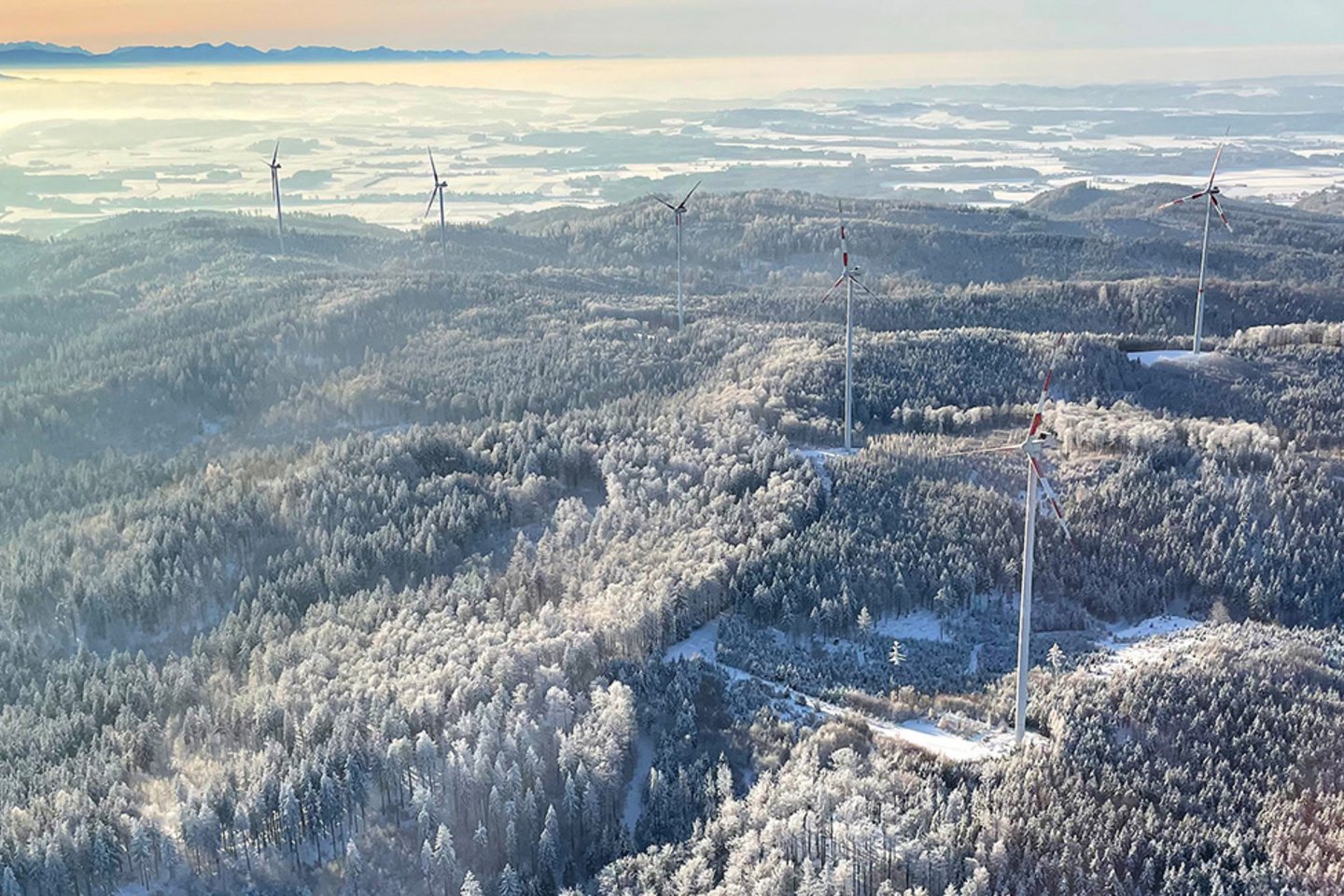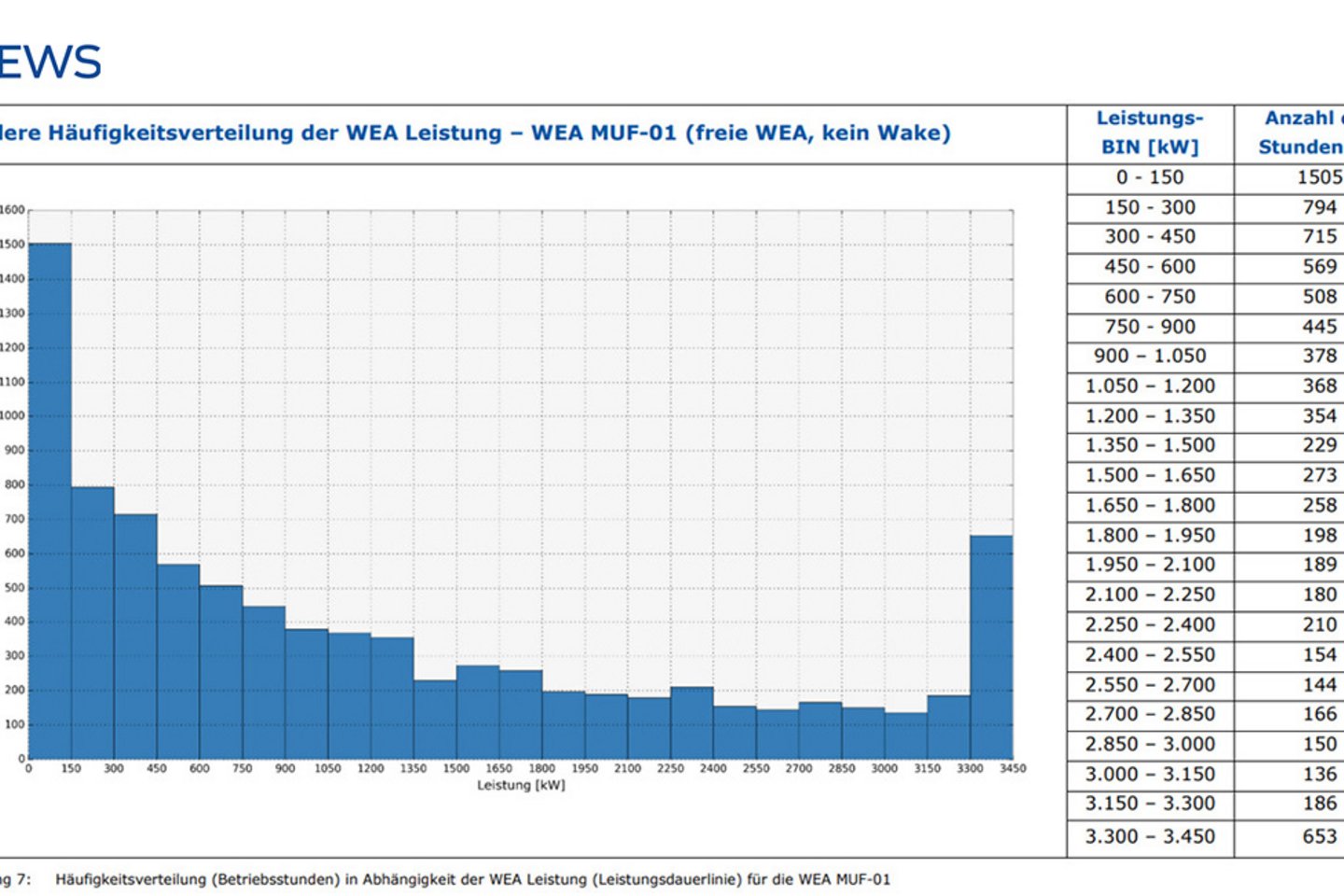Wind power production at Munderfing wind farm for 7,260 hours a year.
In the following answers, he explains which hourly yields can be expected for the planned Kobernaußerwald wind farm project based on these calculations and which method is used for this:
Question: What is the procedure for a site-specific wind potential and yield calculation?
David Schedlberger:"External data, e.g. from weather stations, and, if necessary, internal documents or records, such as wind measurement data from mast and/or LiDAR measurements and electricity yields from existing wind turbines, are used to create wind and yield forecasts. In the case of external input data from non-accredited companies, we always carry out a plausibility check, which takes place in the course of creating a digital terrain model or preparing the report."
Question: What conclusions can be drawn from the yield calculation for the Munderfing 01 wind turbine for the planned wind farm project in Kobernaußerwald?
David Schedlberger:"For the Vestas 136 Muf-01 wind turbine, we have created a power duration curve that shows how much power is generated in how many operating hours. The result is 7,260 operating hours, as can be seen in the diagram (image on the right). With a total of 8,760 hours per year, this results in a quota of around 83% of wind power being produced and fed into the grid."
83 % operating hours forecast for wind farm expansion project in Kobernaußerwald
Due to the further technical development of wind turbines with higher hub heights and larger rotor diameters, the latest generation of wind turbines can produce more electricity. It is therefore to be expected that downtimes will be further reduced. "Incidentally, these are precisely the times when there is usually a lot of PV power in the grid and wind and solar power complement each other perfectly, just like in the textbook," says David Schedlberger.
Why wind turbines don't turn
The rotor blades of wind turbines start to turn as soon as they are hit by the wind at a speed of approx. 3 m/s or more. The wind turbines constantly align themselves in the optimum position in relation to the wind. If there is no wind, the wind turbine stands still.
In addition, there are other reasons why wind turbines have to stand still, e.g. for maintenance or repair work or official requirements. If a wind turbine has been installed but is not yet connected to the electricity grid, it is also at a standstill.
What happens to the wind turbines in the event of a severe storm or hurricane?
At wind speeds of 100 km/h or more, the rotor blades are pitched out of the wind, i.e. turned in such a way that they minimise the area exposed to the wind. This storm reduction takes place for static reasons to protect the turbine components; the rotor blades then continue to turn slowly, usually for a few minutes, until the storm or hurricane peaks have passed and then align themselves again autonomously to resume full electricity production.
One final point: Wind turbines would never stand still because too much electricity is being generated. The feed-in of green electricity always has priority! In theory, grid operators can take electricity producers such as wind turbines off the grid if the stability of the grid is jeopardised. However, this has never been necessary at the Munderfing wind farm.
Read more about the Munderfing community wind farm here.



